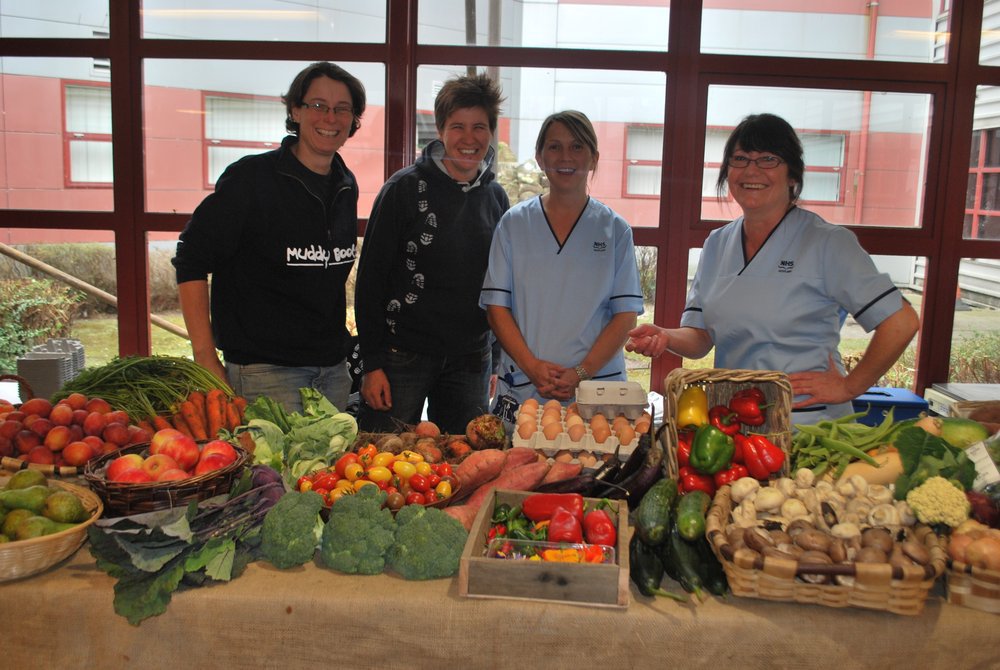Those at higher risk of diet-related ill health include those in areas of higher deprivation, those with disabilities, minority ethnic backgrounds and those in vulnerable situations such as homelessness.
In summary:
- How our diet effects our health
- The Scottish diet and why it needs to change
- Relevant food strategies
- Resources to support food work in Fife
- Training available to support food work

How diet affects our health
Dietary risk factors
Red and processed meat increases the risk of bowel cancer
- Salt increases the risk of high blood pressure
- Sugar increases the risk of tooth decay and can contribute to weight gain
- Saturated fat increases the risk of cardiovascular disease
- Sugary drinks increase the risk of type 2 diabetes
Protective dietary factors
-
Fruit and vegetables decrease the risk of cardiovascular disease and some cancers
-
Fibre decreases the risk of bowel cancer
-
Oil rich fish decreases the risk of cardiovascular disease
The Scottish diet and why it needs to change
In common with the most of the western world, Scotland eats too much of the wrong things. It is not just a case of over-indulging occasionally - many of us make unhealthy choices about what and how much we eat throughout the day, every day. we are encouraged by a food and drink environment in which high fat, salt and sugary foods are cheap, widely available and heavily promoted.
- The Scottish diet remains to high in calories, fats, sugar and salt and too low in fibre, fruit and vegetables and other health foods such as oil-rich fish.
- Two out of three people in Scotland are either overweight or obese. There is a higher proportion of people living with obesity in the most deprived areas compared to the least deprived areas.
- Discretionary foods include confectionery, cakes, biscuits, pastries and savoury snacks, in addition to sugary drinks and drinks containing alcohol. These products tent to be high in calories, low in nutritional value and are not necessary for our health.
- We buy a lot of these products from shops and supermarkets. They tend to be heavily promoted and represent and unhealthy proportion of our overall diet.
- We also buy a lot of discretionary foods when we are out of home, with cakes, biscuits and pastries and crisps/savoury snacks among the top foods being purchased.
- It is essential that we reduce the consumption of discretionary foods and drinks if we are to make significant and measurable improvements to diet and health.
- We also buy a lot of takeaways, and food delivery is on the rise.
Relevant food strategies
Scottish Government's public health priorities
In our list of priorities for the health of the nation, food sits as Priority 6 – to imagine a Scotland where we eat well, have a healthy weight and are physically active.
Scotland’s Public Health Priorities
Food for Fife
The Food4Fife project is about people in Fife (individuals, communities and businesses) coming together to work across all aspects of the food system to help solve some of today’s health, environmental and economic challenges.
A healthier future
A Healthier Future – Scotland’s Diet and Healthy Weight delivery plan
The Scottish Diet – It needs to change
Resources to support food work in Fife
IRC offers a free lending library for
- Games
- displays
- reference
- materials
- posters and more
- Educational activities fact sheets and more - FSS
- Behaviour, recipes, cooking tips - Parentclub
- Food Fact Sheets – BDA
Scottish Government healthy eating guidance
The Interactive Eatwell Guide | Food Standards Scotland
Food labelling
Training available to support food work
Health Promotion are an accredited REHIS training centre and offer a variety of training around food and health, delivering cooking skills programmes and supporting the community food network, who work at ground level to promote skills knowledge and confidence of food and health within their groups
Health promotion training